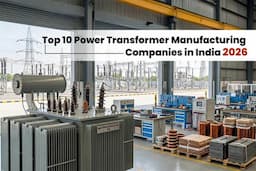Introduction
The safety officers and procurement of high-risk sectors must practice due diligence while choosing safety helmets for their staff.
According to research, staff at high-risk sites who wear an industrial safety helmet mitigate the likelihood of brain injury by 50% [1]. Also, OSHA’s recent decision [2] to replace traditional hard hats with improved safety helmets in the construction and oil and gas industries demonstrates a commitment to improving worker safety.
This blog outlines the features of safety helmets for best practices.
Helmet’s purpose and standards
Helmets vary from bump caps, designed for minor knocks, to high-performance industrial helmets for high-risk environments like mining. Lightweight helmets suit low-risk tasks where minimal head protection is needed, whereas standard and industrial helmets offer more substantial protection from potential impacts from falling objects. Climbing helmets, adapted for fall-risk tasks, ensure the helmet remains secured. Each helmet type aligns with specific standards,
- Bump Cap (EN 812): Minimal protection, suitable for low-impact environments like warehouses or maintenance work.
- Lightweight Safety Helmet (EN 397 Lightweight): For low-risk areas, head protection is needed against small, flying objects. Ideal for utility and highway maintenance.
- Standard Safety Helmet (EN 397 Standard): Common in construction and manufacturing, offering protection from falling objects.
- Industrial Safety Helmet (EN 397 Industrial): Heavier, robust helmets for high-risk areas with possible side impacts.
- Climbing Helmet (EN 12492): For work at heights with risks of falls, offering enhanced retention and side-impact protection.
- High-Performance Industrial Helmet (EN 14052): High protection for areas with falling debris, such as mining or construction sites.
- Anti-Static Helmet (EN13463-1): Designed for explosive environments to prevent static buildup.
- Motorcycle Helmet (B.S. 6658:1985): For road use by motorcyclists, featuring visors or goggles for eye protection.
The Impact Analysis
IA is the most important aspect. The solution is clear: TBIs account for a significant share of construction injuries—11–22% [3] generally and up to 61% for severe cases, as indicated by Swedish and German data. Adopting safety helmets that meet ANSI/ISEA impact standards, capable of withstanding impacts without transmitting more than 4,450 N to the wearer, becomes imperative. This approach, backed by comprehensive testing, addresses the high TBI rates from falls by ensuring helmets are specifically evaluated for their ability to protect against such injuries, enhancing worker safety.
The Design Features
Studies [4] comparing traditional hardhats with modern designs, including those with rotation-damping and climbing-style features, suggest that newer is sometimes better. Despite various impact tests, traditional hardhats sometimes outperform modern counterparts, particularly in scenarios mimicking falls and object impacts.
The key takeaway is to focus on the best quality helmets based on their specific impact performance data rather than assuming that newer designs offer enhanced protection.
Final Words
Every safety officer understands the importance of safety helmets, and the onus lies on their shoulders to choose the best for their workers. The considerations mentioned above are a few among many considerations. The next step is to connect with experts such as Moglix to learn more about further considerations and procurement approaches.
References:
- https://ohsonline.com/articles/2021/03/01/from-the-hard-hat-to-the-helmet.aspx
- https://www.osha.gov/news/newsreleases/trade/12112023#:~:text=On%20Nov.,protect%20workers’%20entire%20heads%20better.
- https://www.sciencedirect.com/science/article/pii/S0925753520305439#:~:text=TBI%20accounts%20for%2011%E2%80%9322,fall%20accidents%2C%20in%20both%20countries.
- https://www.sciencedirect.com/science/article/pii/S2405844022012506




